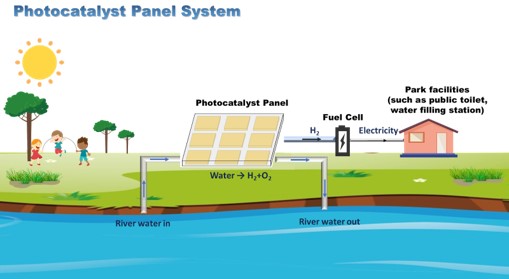Invited Speaker
Biography
Yun Hau Ng is a Professor at the School of Energy and Environment, City University of Hong Kong. He received his Ph.D (Chemistry) from Osaka University in 2009. After a brief research visit to Radiation Laboratory at University of Notre Dame, he joined the Australian Research Council (ARC) Centre of Excellence for Functional Nanomaterials at UNSW with APD fellowship in 2011. He became a lecturer (2014) and Senior Lecturer (2016) in the School of Chemical Engineering at the University of New South Wales (UNSW) before joining City University of Hong Kong in 2018.
His research is focused on the development of novel photoactive semiconductors (particles and thin films) for sunlight energy conversion, including hydrogen generation from water and conversion of carbon dioxide to solar fuels. He was awarded the Honda-Fujishima Prize in 2013 by the Electrochemical Society of Japan in recognition of his work in the area of photo-driven water splitting. He was also selected as Emerging Investigator in Energy Materials by the RSC Journal of Material Chemistry A in 2016. In 2018, he received the Distinguished Lectureship Award from the Chemical Society of Japan. In 2019, He was awarded APEC Science Prize for Innovation, Research and Education (ASPIRE) in Chile for his work in artificial photosynthesis. He is also the recipient of the Japanese Photochemistry Association Kataoka Lectureship Award for Asian and Oceanian Photochemist 2021. He has published over 200 peer-reviewed research articles (including Nature Catalysis, JACS, Angewandte Chemie, Advanced Materials, Energy & Environmental Science, Chemical Society Reviews, Chemical Reviews, and etc.) with >18,000 citations.
Solar Fuels (Hydrogen) via Catalytic Conversion
Yun Hau Ng 1,2
Abstract
Hydrogen is one of the potential sources of energy which has potential to substitute fossil fuel. Hydrogen can play a role in contributing to a resilient, sustainable energy future in two major directions: (1) current/ traditional practice of hydrogen usage, dominantly present in industrial activities (e.g. refinery, steel production, fertilizer manufacturing etc.), can use hydrogen produced from greener alternative methods; (2) hydrogen receives interest in new and emerging applications mainly in electricity generation, heating source and transportation (fuel cell vehicle FCV). Hydrogen can be directly used in its pure form stored in different physical states (including uncompressed gas, compressed gas, liquefied hydrogen and solid-state hydrogen as metal hydride). Alternatively, it can be converted to hydrogen-based fuels such as ammonia, methane or liquid alcohol fuels. With this multiple facets of hydrogen, there is potential to connect different parts of the energy system with hydrogen-derived fuels.

Figure 1: Schematic illustration of potential use of photocatalyst panel for hydrogen production
References
[1] H. Wu, L. Zhang, A. Du, R. Irani, R. van de Krol, F. F. Abdi, Y. H. Ng, Nature Commun. 2022, 13, 6231.
[2] H. Wu, R. Irani, K. Zhang, L. Jing, H. Dai, H. Y. Chung, F. F. Abdi, Y. H. Ng, ACS Energy Lett. 2021, 6 (10), 3400-3407.
[3] H. Wu, H. T. Tan, C. Y. Toe, J. Scott, L. Wang, R. Amal, Y. H. Ng, Adv. Mater. 2020, 32 (18), 1904717.

